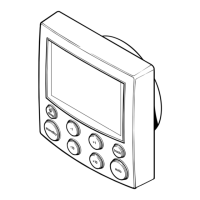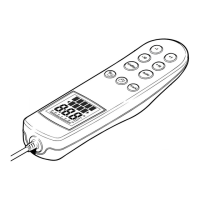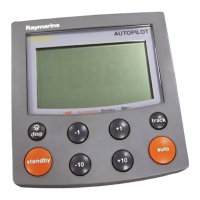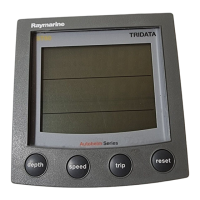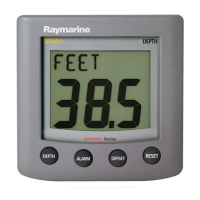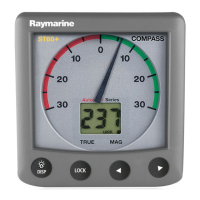8 ST60 Multi Instrument Owner’s Handbook
Note:
If a depth alarm occurs while a page in the depth chapter is displayed, or a wind
alarm occurs while a page in the wind chapter is displayed, the screen will revert to the first
page of the respective chapter.
To cancel an alarm, press any one of the ST60 Multi front panel keys.
Auxiliary Alarm option
An optional Auxiliary Alarm can be fitted at a convenient remote position, to give
a loud, audible indication if any one of a range of alarms occurs. This option is
particularly useful for situations where high ambient noise may make it difficult to
hear the instrument’s internal alarm (e.g. aboard a power boat). The range of
alarms sounded by the Auxiliary Alarm depends on:
• What data is available on SeaTalk.
• Which alarms are enabled during User calibration (see
Chapter 4,
Calibration )
.
If the Auxiliary Alarm sounds, check your instruments to see which one is showing
an alarm indication, and take the appropriate action.
Note:
An Auxiliary Alarm cannot be fitted if the NMEA output port is being used.
1.6 Operating with NMEA
The ST60 Multi instrument can provide data communication between SeaTalk
and NMEA when the appropriate connections are made, and supports NMEA
0183 compatible products.
SeaTalk to NMEA 0183
Data from SeaTalk is transmitted to the NMEA output port every 2 seconds. The
data types and NMEA headers are:
Data NMEA Header
Depth DBT
Heading, deviation and variation HDG
Magnetic heading HDM
Water temperature MTW
Water speed and heading VHW
Wind speed and angle MWV
81039_4.book Page 8 Wednesday, March 24, 2004 3:14 PM

